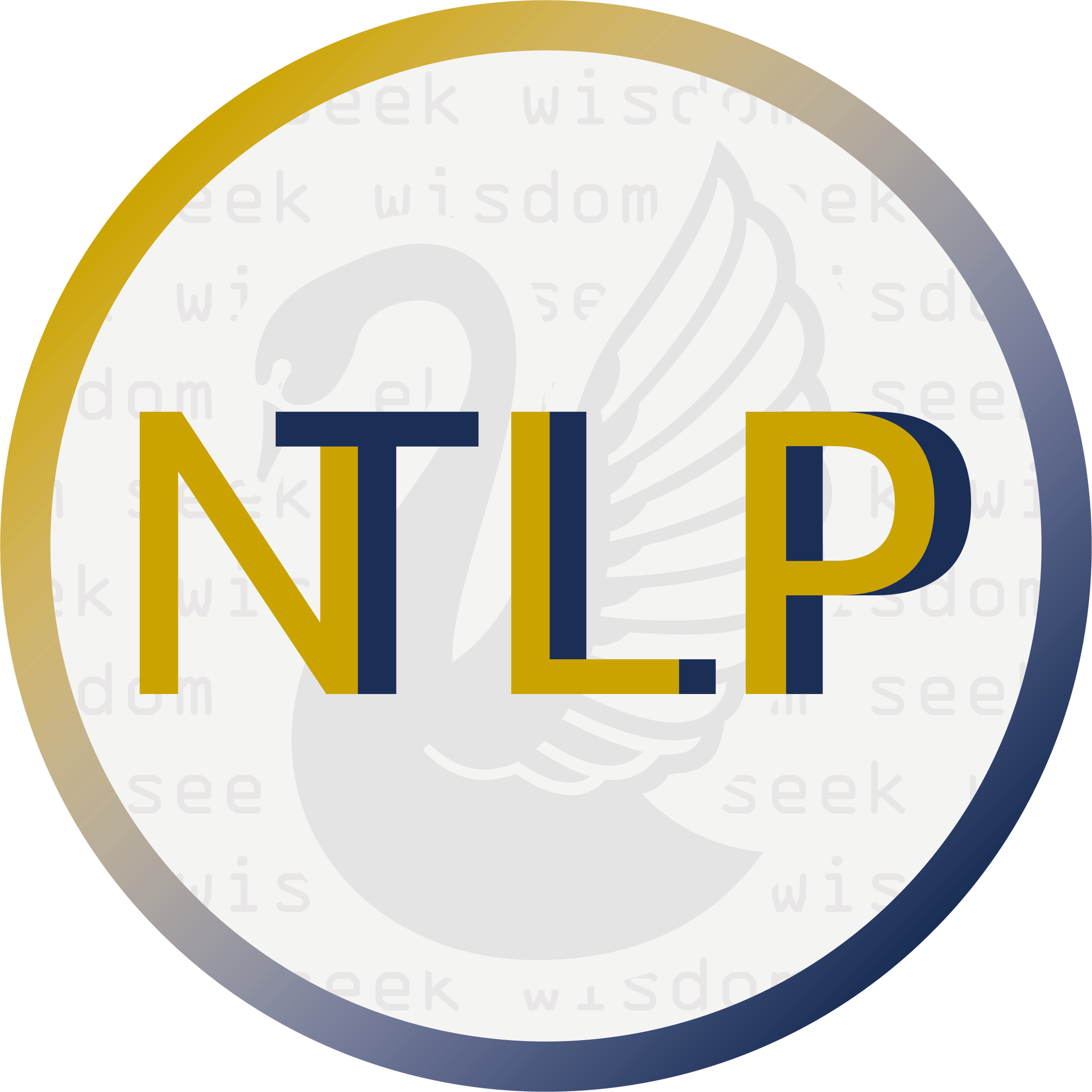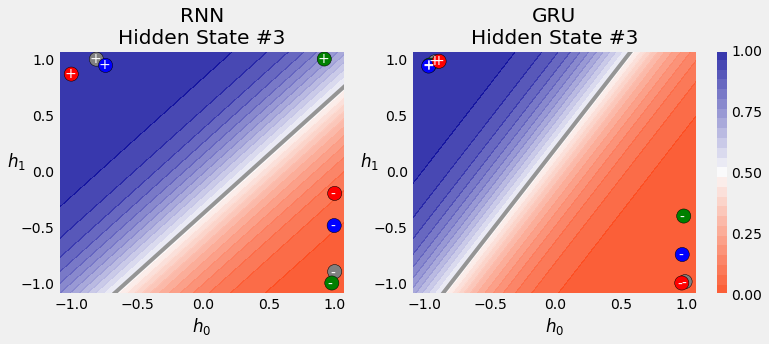3. The Square Model Using GRU and LSTM¶
In this notebook, we put GRU and LSTM in the same square sequence direction classification that we have seen before with Elman RNN. The Elman RNN model is also included for performance comparision.
You can see that LSTM achieves the best result, but GRU being a simpler model also has similar performance. So when there is a trade-off between performance and computational efficiency, GRU is often a prefered model.
3.1. Download Untility Files for Plotting and Data Generation¶
Download these utility functions first and place them in the same directory as this notebook.
from IPython.display import FileLink, FileLinks
FileLink('plots.py')
FileLink('util.py')
FileLink('replay.py')
3.2. Imports¶
import numpy as np
import torch
import torch.optim as optim
import torch.nn as nn
import torch.nn.functional as F
from torch.utils.data import DataLoader, Dataset, random_split, TensorDataset
from torch.nn.utils import rnn as rnn_utils
from util import StepByStep
from plots import *
3.3. Synthetic Data Generation¶
3.3.1. Sequence Generation Function¶
This function generate sequences, each of four data points, located close to a perfect square with four corners at [-1, -1], [-1, 1], [1, 1], [1, -1], respectively.
def generate_sequences(n=128, variable_len=False, seed=13):
basic_corners = np.array([[-1, -1], [-1, 1], [1, 1], [1, -1]])
np.random.seed(seed)
bases = np.random.randint(4, size=n)
if variable_len:
lengths = np.random.randint(3, size=n) + 2
else:
lengths = [4] * n
directions = np.random.randint(2, size=n)
points = [basic_corners[[(b + i) % 4 for i in range(4)]][slice(None, None, d*2-1)][:l] + np.random.randn(l, 2) * 0.1 for b, d, l in zip(bases, directions, lengths)]
return points, directions
3.3.2. Training data Generation¶
points, directions = generate_sequences(n=128, seed=13)
fig = plot_data(points, directions)
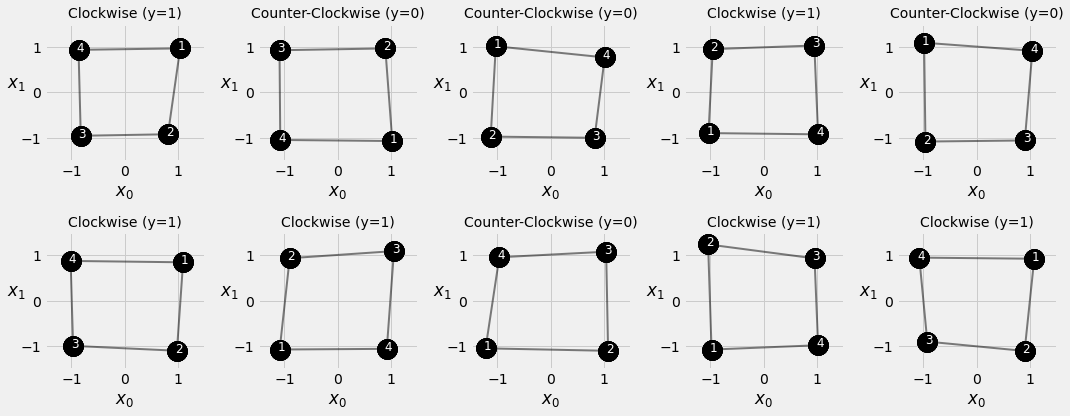
3.4. Square Model¶
3.4.1. Test Data Generation¶
test_points, test_directions = generate_sequences(seed=19)
3.4.2. Data Preparation¶
train_data = TensorDataset(torch.as_tensor(points).float(),
torch.as_tensor(directions).view(-1, 1).float())
test_data = TensorDataset(torch.as_tensor(test_points).float(),
torch.as_tensor(test_directions).view(-1, 1).float())
train_loader = DataLoader(train_data, batch_size=16, shuffle=True)
test_loader = DataLoader(test_data, batch_size=16)
3.4.3. Model Configuration¶
class SquareModel(nn.Module):
def __init__(self, n_features, hidden_dim, n_outputs):
super(SquareModel, self).__init__()
self.hidden_dim = hidden_dim
self.n_features = n_features
self.n_outputs = n_outputs
self.hidden = None
# Simple RNN
self.basic_rnn = nn.RNN(self.n_features, self.hidden_dim, batch_first=True)
# Classifier to produce as many logits as outputs
self.classifier = nn.Linear(self.hidden_dim, self.n_outputs)
def forward(self, X):
# X is batch first (N, L, F)
# output is (N, L, H)
# final hidden state is (1, N, H)
batch_first_output, self.hidden = self.basic_rnn(X)
# only last item in sequence (N, 1, H)
last_output = batch_first_output[:, -1]
# classifier will output (N, 1, n_outputs)
out = self.classifier(last_output)
# final output is (N, n_outputs)
return out.view(-1, self.n_outputs)
torch.manual_seed(21)
model = SquareModel(n_features=2, hidden_dim=2, n_outputs=1)
loss = nn.BCEWithLogitsLoss()
optimizer = optim.Adam(model.parameters(), lr=0.01)
3.4.4. Model Training¶
The StepByStep class encapsulated the training routine as well as the data loading into methods such as:
_mini_batch_make_train_step_make_val_step
You may want to take a closer look at the StepByStep in the util.py file to learn how to factorize your code into a reusable blocks.
sbs_rnn = StepByStep(model, loss, optimizer)
sbs_rnn.set_loaders(train_loader, test_loader)
sbs_rnn.train(100)
fig = sbs_rnn.plot_losses()
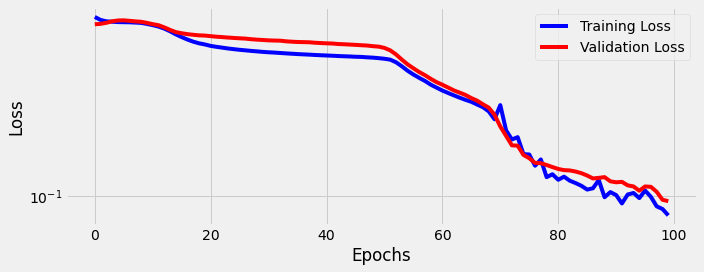
StepByStep.loader_apply(test_loader, sbs_rnn.correct)
tensor([[50, 53],
[75, 75]])
3.4.5. Transformed Inputs¶
class SquareModelGRU(nn.Module):
def __init__(self, n_features, hidden_dim, n_outputs):
super(SquareModelGRU, self).__init__()
self.hidden_dim = hidden_dim
self.n_features = n_features
self.n_outputs = n_outputs
self.hidden = None
# Simple GRU
self.basic_rnn = nn.GRU(self.n_features, self.hidden_dim, batch_first=True)
# Classifier to produce as many logits as outputs
self.classifier = nn.Linear(self.hidden_dim, self.n_outputs)
def forward(self, X):
# X is batch first (N, L, F)
# output is (N, L, H)
# final hidden state is (1, N, H)
batch_first_output, self.hidden = self.basic_rnn(X)
# only last item in sequence (N, 1, H)
last_output = batch_first_output[:, -1]
# classifier will output (N, 1, n_outputs)
out = self.classifier(last_output)
# final output is (N, n_outputs)
return out.view(-1, self.n_outputs)
3.4.6. Model Configuration & Training¶
torch.manual_seed(21)
model = SquareModelGRU(n_features=2, hidden_dim=2, n_outputs=1)
loss = nn.BCEWithLogitsLoss()
optimizer = optim.Adam(model.parameters(), lr=0.01)
sbs_gru = StepByStep(model, loss, optimizer)
sbs_gru.set_loaders(train_loader, test_loader)
sbs_gru.train(100)
fig = sbs_gru.plot_losses()
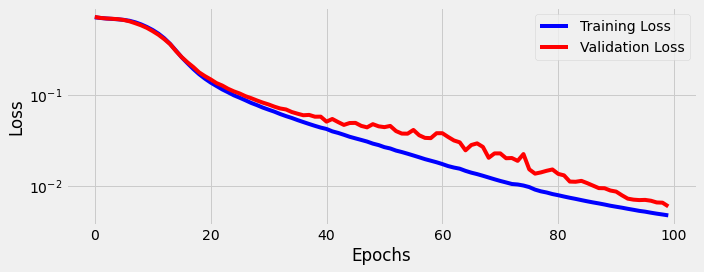
StepByStep.loader_apply(test_loader, sbs_gru.correct)
tensor([[53, 53],
[75, 75]])
3.5. Visualizing the Model¶
3.6. Square Model: LSTM¶
3.6.1. Model Configuration¶
class SquareModelLSTM(nn.Module):
def __init__(self, n_features, hidden_dim, n_outputs):
super(SquareModelLSTM, self).__init__()
self.hidden_dim = hidden_dim
self.n_features = n_features
self.n_outputs = n_outputs
self.hidden = None
self.cell = None
# Simple LSTM
self.basic_rnn = nn.LSTM(self.n_features, self.hidden_dim, batch_first=True)
# Classifier to produce as many logits as outputs
self.classifier = nn.Linear(self.hidden_dim, self.n_outputs)
def forward(self, X):
# X is batch first (N, L, F)
# output is (N, L, H)
# final hidden state is (1, N, H)
# final cell state is (1, N, H)
batch_first_output, (self.hidden, self.cell) = self.basic_rnn(X)
# only last item in sequence (N, 1, H)
last_output = batch_first_output[:, -1]
# classifier will output (N, 1, n_outputs)
out = self.classifier(last_output)
# final output is (N, n_outputs)
return out.view(-1, self.n_outputs)
3.6.2. Model Configuration & Training¶
torch.manual_seed(21)
model = SquareModelLSTM(n_features=2, hidden_dim=2, n_outputs=1)
loss = nn.BCEWithLogitsLoss()
optimizer = optim.Adam(model.parameters(), lr=0.01)
sbs_lstm = StepByStep(model, loss, optimizer)
sbs_lstm.set_loaders(train_loader, test_loader)
sbs_lstm.train(100)
fig = sbs_lstm.plot_losses()
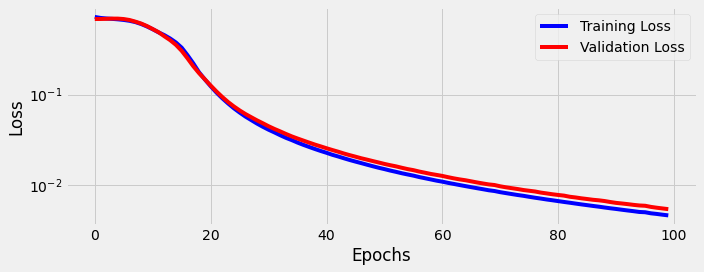
StepByStep.loader_apply(test_loader, sbs_lstm.correct)
tensor([[53, 53],
[75, 75]])
3.8. Variable-Length Sequences¶
s0 = points[0] # 4 data points
s1 = points[1][2:] # 2 data points
s2 = points[2][1:] # 3 data points
s0.shape, s1.shape, s2.shape
((4, 2), (2, 2), (3, 2))
3.8.1. Padding¶
all_seqs = [s0, s1, s2]
torch.as_tensor(all_seqs)
---------------------------------------------------------------------------
ValueError Traceback (most recent call last)
~\AppData\Local\Temp/ipykernel_13432/1816182238.py in <module>
1 all_seqs = [s0, s1, s2]
----> 2 torch.as_tensor(all_seqs)
ValueError: expected sequence of length 4 at dim 1 (got 2)
seq_tensors = [torch.as_tensor(seq).float() for seq in all_seqs]
padded = rnn_utils.pad_sequence(seq_tensors, batch_first=True)
padded
tensor([[[ 1.0349, 0.9661],
[ 0.8055, -0.9169],
[-0.8251, -0.9499],
[-0.8670, 0.9342]],
[[-1.0911, 0.9254],
[-1.0771, -1.0414],
[ 0.0000, 0.0000],
[ 0.0000, 0.0000]],
[[-1.1247, -0.9683],
[ 0.8182, -0.9944],
[ 1.0081, 0.7680],
[ 0.0000, 0.0000]]])
torch.manual_seed(11)
rnn = nn.RNN(2, 2, batch_first=True)
output_padded, hidden_padded = rnn(padded)
output_padded
tensor([[[-0.6388, 0.8505],
[-0.4215, 0.8979],
[ 0.3792, 0.3432],
[ 0.3161, -0.1675]],
[[ 0.2911, -0.1811],
[ 0.3051, 0.7055],
[ 0.0052, 0.5819],
[-0.0642, 0.6012]],
[[ 0.3385, 0.5927],
[-0.3875, 0.9422],
[-0.4832, 0.6595],
[-0.1007, 0.5349]]], grad_fn=<TransposeBackward1>)
hidden_padded.permute(1, 0, 2)
tensor([[[ 0.3161, -0.1675]],
[[-0.0642, 0.6012]],
[[-0.1007, 0.5349]]], grad_fn=<PermuteBackward>)
3.8.2. Packing¶
packed = rnn_utils.pack_sequence(seq_tensors, enforce_sorted=False)
packed
PackedSequence(data=tensor([[ 1.0349, 0.9661],
[-1.1247, -0.9683],
[-1.0911, 0.9254],
[ 0.8055, -0.9169],
[ 0.8182, -0.9944],
[-1.0771, -1.0414],
[-0.8251, -0.9499],
[ 1.0081, 0.7680],
[-0.8670, 0.9342]]), batch_sizes=tensor([3, 3, 2, 1]), sorted_indices=tensor([0, 2, 1]), unsorted_indices=tensor([0, 2, 1]))
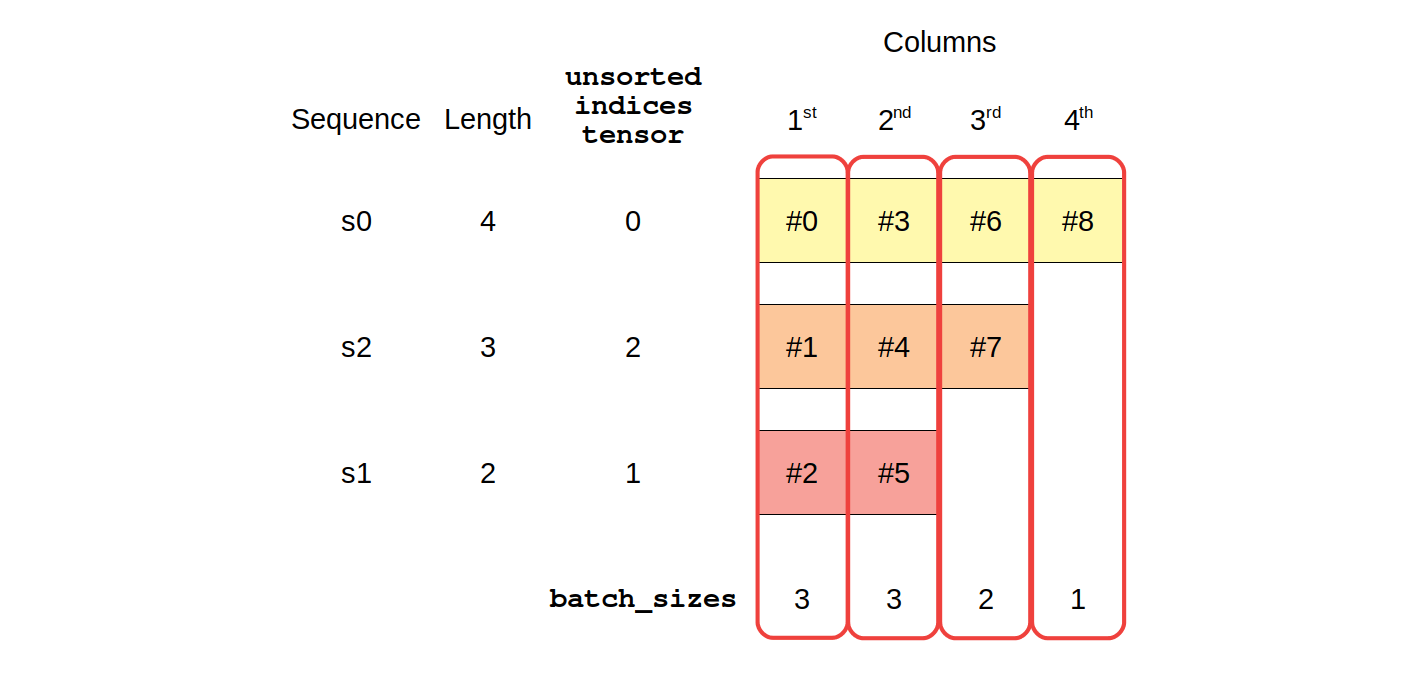

(packed.data[[0, 3, 6, 8]] == seq_tensors[0]).all()
tensor(True)
output_packed, hidden_packed = rnn(packed)
output_packed, hidden_packed
(PackedSequence(data=tensor([[-0.6388, 0.8505],
[ 0.3385, 0.5927],
[ 0.2911, -0.1811],
[-0.4215, 0.8979],
[-0.3875, 0.9422],
[ 0.3051, 0.7055],
[ 0.3792, 0.3432],
[-0.4832, 0.6595],
[ 0.3161, -0.1675]], grad_fn=<CatBackward>), batch_sizes=tensor([3, 3, 2, 1]), sorted_indices=tensor([0, 2, 1]), unsorted_indices=tensor([0, 2, 1])),
tensor([[[ 0.3161, -0.1675],
[ 0.3051, 0.7055],
[-0.4832, 0.6595]]], grad_fn=<IndexSelectBackward>))
hidden_packed == hidden_padded
tensor([[[ True, True],
[False, False],
[False, False]]])
output_packed.data[[2, 5]] # x1 sequence
tensor([[ 0.2911, -0.1811],
[ 0.3051, 0.7055]], grad_fn=<IndexBackward>)
3.8.3. Unpacking (to padded)¶
output_unpacked, seq_sizes = rnn_utils.pad_packed_sequence(output_packed, batch_first=True)
output_unpacked, seq_sizes
(tensor([[[-0.6388, 0.8505],
[-0.4215, 0.8979],
[ 0.3792, 0.3432],
[ 0.3161, -0.1675]],
[[ 0.2911, -0.1811],
[ 0.3051, 0.7055],
[ 0.0000, 0.0000],
[ 0.0000, 0.0000]],
[[ 0.3385, 0.5927],
[-0.3875, 0.9422],
[-0.4832, 0.6595],
[ 0.0000, 0.0000]]], grad_fn=<IndexSelectBackward>),
tensor([4, 2, 3]))
output_unpacked[:, -1]
tensor([[ 0.3161, -0.1675],
[ 0.0000, 0.0000],
[ 0.0000, 0.0000]], grad_fn=<SelectBackward>)
seq_idx = torch.arange(seq_sizes.size(0))
output_unpacked[seq_idx, seq_sizes-1]
tensor([[ 0.3161, -0.1675],
[ 0.3051, 0.7055],
[-0.4832, 0.6595]], grad_fn=<IndexBackward>)
3.8.4. Packing (from padded)¶
len_seqs = [len(seq) for seq in all_seqs]
len_seqs
[4, 2, 3]
packed = rnn_utils.pack_padded_sequence(padded, len_seqs, enforce_sorted=False, batch_first=True)
packed
PackedSequence(data=tensor([[ 1.0349, 0.9661],
[-1.1247, -0.9683],
[-1.0911, 0.9254],
[ 0.8055, -0.9169],
[ 0.8182, -0.9944],
[-1.0771, -1.0414],
[-0.8251, -0.9499],
[ 1.0081, 0.7680],
[-0.8670, 0.9342]]), batch_sizes=tensor([3, 3, 2, 1]), sorted_indices=tensor([0, 2, 1]), unsorted_indices=tensor([0, 2, 1]))
3.8.5. Variable-Length Dataset¶
var_points, var_directions = generate_sequences(variable_len=True)
var_points[:2]
[array([[ 1.12636495, 1.1570899 ],
[ 0.87384513, -1.00750892],
[-0.9149893 , -1.09150317],
[-1.0867348 , 1.07731667]]),
array([[ 0.92250954, -0.89887678],
[ 1.0941646 , 0.92300589]])]
3.9. Data Preparation¶
class CustomDataset(Dataset):
def __init__(self, x, y):
self.x = [torch.as_tensor(s).float() for s in x]
self.y = torch.as_tensor(y).float().view(-1, 1)
def __getitem__(self, index):
return (self.x[index], self.y[index])
def __len__(self):
return len(self.x)
train_var_data = CustomDataset(var_points, var_directions)
train_var_loader = DataLoader(train_var_data, batch_size=16, shuffle=True)
next(iter(train_var_loader))
---------------------------------------------------------------------------
RuntimeError Traceback (most recent call last)
~\AppData\Local\Temp/ipykernel_13432/3135847152.py in <module>
1 train_var_loader = DataLoader(train_var_data, batch_size=16, shuffle=True)
----> 2 next(iter(train_var_loader))
C:\ProgramData\Anaconda3\envs\cits4012\lib\site-packages\torch\utils\data\dataloader.py in __next__(self)
519 if self._sampler_iter is None:
520 self._reset()
--> 521 data = self._next_data()
522 self._num_yielded += 1
523 if self._dataset_kind == _DatasetKind.Iterable and \
C:\ProgramData\Anaconda3\envs\cits4012\lib\site-packages\torch\utils\data\dataloader.py in _next_data(self)
559 def _next_data(self):
560 index = self._next_index() # may raise StopIteration
--> 561 data = self._dataset_fetcher.fetch(index) # may raise StopIteration
562 if self._pin_memory:
563 data = _utils.pin_memory.pin_memory(data)
C:\ProgramData\Anaconda3\envs\cits4012\lib\site-packages\torch\utils\data\_utils\fetch.py in fetch(self, possibly_batched_index)
45 else:
46 data = self.dataset[possibly_batched_index]
---> 47 return self.collate_fn(data)
C:\ProgramData\Anaconda3\envs\cits4012\lib\site-packages\torch\utils\data\_utils\collate.py in default_collate(batch)
82 raise RuntimeError('each element in list of batch should be of equal size')
83 transposed = zip(*batch)
---> 84 return [default_collate(samples) for samples in transposed]
85
86 raise TypeError(default_collate_err_msg_format.format(elem_type))
C:\ProgramData\Anaconda3\envs\cits4012\lib\site-packages\torch\utils\data\_utils\collate.py in <listcomp>(.0)
82 raise RuntimeError('each element in list of batch should be of equal size')
83 transposed = zip(*batch)
---> 84 return [default_collate(samples) for samples in transposed]
85
86 raise TypeError(default_collate_err_msg_format.format(elem_type))
C:\ProgramData\Anaconda3\envs\cits4012\lib\site-packages\torch\utils\data\_utils\collate.py in default_collate(batch)
54 storage = elem.storage()._new_shared(numel)
55 out = elem.new(storage)
---> 56 return torch.stack(batch, 0, out=out)
57 elif elem_type.__module__ == 'numpy' and elem_type.__name__ != 'str_' \
58 and elem_type.__name__ != 'string_':
RuntimeError: stack expects each tensor to be equal size, but got [4, 2] at entry 0 and [2, 2] at entry 1
3.9.1. Collate Function¶
def pack_collate(batch):
X = [item[0] for item in batch]
y = [item[1] for item in batch]
X_pack = rnn_utils.pack_sequence(X, enforce_sorted=False)
return X_pack, torch.as_tensor(y).view(-1, 1)
# list of tuples returned by the dataset
dummy_batch = [train_var_data[0], train_var_data[1]]
dummy_x, dummy_y = pack_collate(dummy_batch)
dummy_x
PackedSequence(data=tensor([[ 1.1264, 1.1571],
[ 0.9225, -0.8989],
[ 0.8738, -1.0075],
[ 1.0942, 0.9230],
[-0.9150, -1.0915],
[-1.0867, 1.0773]]), batch_sizes=tensor([2, 2, 1, 1]), sorted_indices=tensor([0, 1]), unsorted_indices=tensor([0, 1]))
train_var_loader = DataLoader(train_var_data, batch_size=16, shuffle=True, collate_fn=pack_collate)
x_batch, y_batch = next(iter(train_var_loader))
3.10. Square Model IV: Packed¶
class SquareModelPacked(nn.Module):
def __init__(self, n_features, hidden_dim, n_outputs):
super(SquareModelPacked, self).__init__()
self.hidden_dim = hidden_dim
self.n_features = n_features
self.n_outputs = n_outputs
self.hidden = None
self.cell = None
# Simple LSTM
self.basic_rnn = nn.LSTM(self.n_features, self.hidden_dim, bidirectional=True)
# Classifier to produce as many logits as outputs
self.classifier = nn.Linear(2 * self.hidden_dim, self.n_outputs)
def forward(self, X):
# X is a PACKED sequence now
# output is PACKED
# final hidden state is (2, N, H) - bidirectional
# final cell state is (2, N, H) - bidirectional
rnn_out, (self.hidden, self.cell) = self.basic_rnn(X)
# unpack the output (N, L, 2*H)
batch_first_output, seq_sizes = rnn_utils.pad_packed_sequence(rnn_out, batch_first=True)
# only last item in sequence (N, 1, 2*H)
seq_idx = torch.arange(seq_sizes.size(0))
last_output = batch_first_output[seq_idx, seq_sizes-1]
# classifier will output (N, 1, n_outputs)
out = self.classifier(last_output)
# final output is (N, n_outputs)
return out.view(-1, self.n_outputs)
3.11. Model Configuration & Training¶
torch.manual_seed(21)
model = SquareModelPacked(n_features=2, hidden_dim=2, n_outputs=1)
loss = nn.BCEWithLogitsLoss()
optimizer = optim.Adam(model.parameters(), lr=0.01)
sbs_packed = StepByStep(model, loss, optimizer)
sbs_packed.set_loaders(train_var_loader)
sbs_packed.train(100)
fig = sbs_packed.plot_losses()
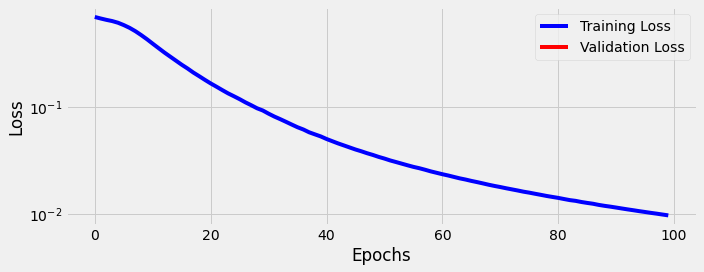
StepByStep.loader_apply(train_var_loader, sbs_packed.correct)
tensor([[66, 66],
[62, 62]])
